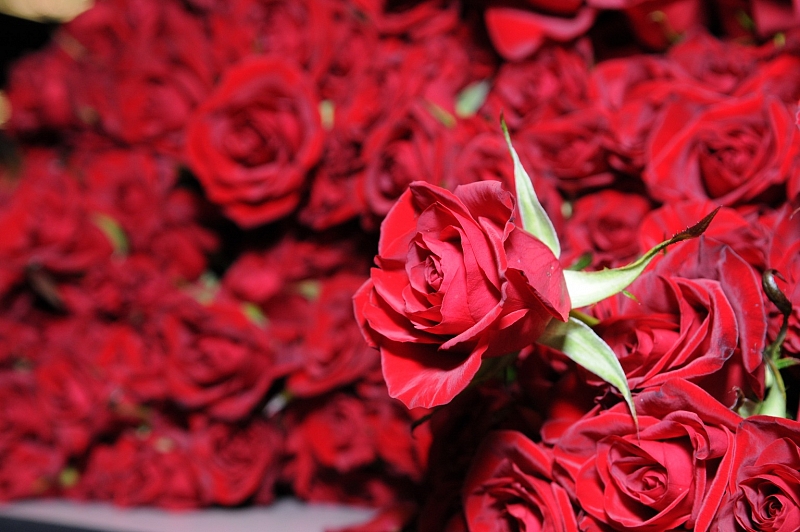Roses are red but not "green"
The ecologist Richard Wiles alarms for toxins in the flowers in North America
St. Valentine's Day is over and with it - the abundance of flower bouquets. So, it's time to tell you about one not so "pink" research on roses, conducted
by the Environmental Working Group. According to their observations every year people all over the world spend around $14-billion dollars for flowers. Not only on St. Valentine's Day, of course,
but on Mother's Day, any birthday, wedding or No Occasion Day - the rose bouquet is always the best present for the beloved. We buy and we're happy because we know that our naturally grown present
can bring only joy and no harm.
Not quite. It turns out that the roses that florists in North America sell are often brought from countries where there are no or littlwe pesticide regulations. That allows the growers to use obsolete and potentially dangerous pesticides, fertilizers and fungicides (such as DDT, dieldrin, methyl parathion and more), many of which are actually banned in North America.
According to Richard Wiles, former vice-president of research for the Environmental Working Group, toxin levels in roses are high enough that their handlers should be wearing gloves! Many flower workers are exposed to a cocktail of highly toxic chemicals every day; nearly two-thirds of Colombian flower workers for instance suffer from health problems including nausea, impaired vision, respiratory and neurological problems. Not only that but instead of being compensated, they are paid only $7 dollars per day - - less than the cost of a single bouquet.
So when next time you see the perfect rose, better ask where it comes from because it may be not as "eco" as you'd like it. To prevent the toxin-flower problem alternativesjournal.ca advice us to buy only seasonal varieties of local flowes in a pot, not cut.
Not quite. It turns out that the roses that florists in North America sell are often brought from countries where there are no or littlwe pesticide regulations. That allows the growers to use obsolete and potentially dangerous pesticides, fertilizers and fungicides (such as DDT, dieldrin, methyl parathion and more), many of which are actually banned in North America.
According to Richard Wiles, former vice-president of research for the Environmental Working Group, toxin levels in roses are high enough that their handlers should be wearing gloves! Many flower workers are exposed to a cocktail of highly toxic chemicals every day; nearly two-thirds of Colombian flower workers for instance suffer from health problems including nausea, impaired vision, respiratory and neurological problems. Not only that but instead of being compensated, they are paid only $7 dollars per day - - less than the cost of a single bouquet.
So when next time you see the perfect rose, better ask where it comes from because it may be not as "eco" as you'd like it. To prevent the toxin-flower problem alternativesjournal.ca advice us to buy only seasonal varieties of local flowes in a pot, not cut.



